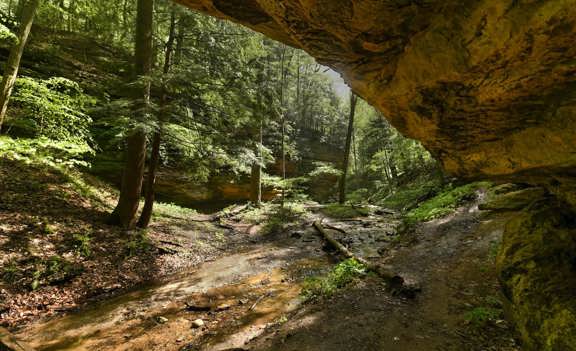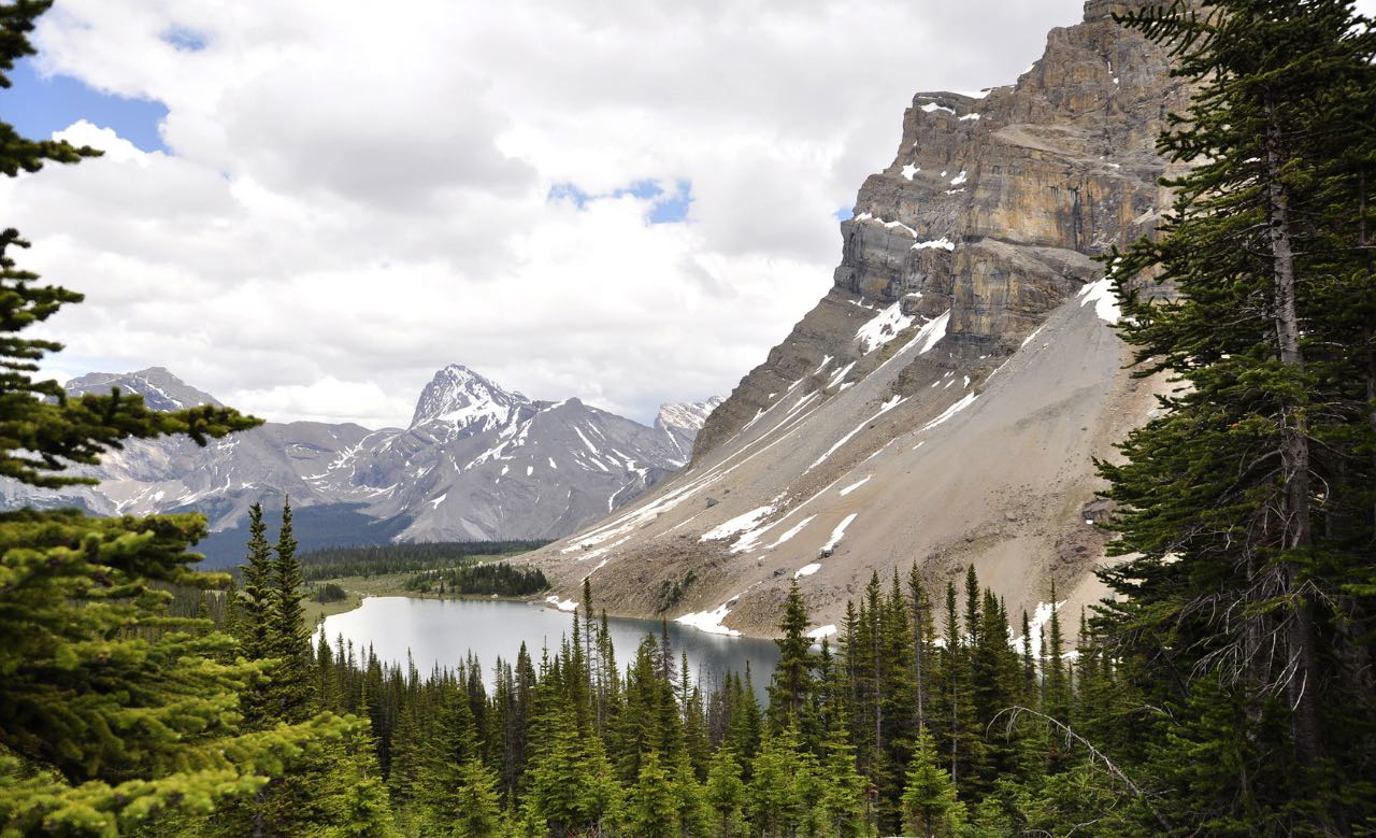
RV Camping in Banff National Park
SharePush those meetings and video calls to next week. The sublime scenery of Banff National Park is calling your name. Today, we’re traveling to Canada’s oldest national park to explore the majestic mountains and glimmering lakes that attract visitors from across the globe.
With so much to offer, it’s no wonder that visitors flock to this lovely locale. Since 2010, Banff National Park has welcomed over three million visitors each year, making Banff Canada’s most visited park.
Fortunately, Banff is an expansive park. There are plenty of trails and spacious landscapes to explore so that you can enjoy Banff's wide-open beauty.
Having a guide to this gem of a park makes your trip that much sweeter. Read on for your guide to RV camping in Banff National Park!
Banff National Park Facts
First, let’s learn about what makes Banff a must-see destination. Below are a handful of points to pique your interest. We hope you find these Banff National Park facts enlightening.
-
Banff was discovered in 1833 when railroad workers stumbled upon a hot spring. It earned national park status in 1885, making it the oldest national park in Canada and the third oldest national park in the world.
-
Get out your camera! Lake Louise is the most photographed lake in the world. At 5,000 feet above sea level, this striking body of water is a sight to behold. There are multiple hikes in the area that offer great lookout points of Lake Louise.
-
Banff is home to an array of wildlife. Caribou, also known as reindeer, are often spotted around the park. Grizzly bears also roam Banff, but they appear less frequently. Dawn and dusk are the ideal times for bear sightings.
-
Mount Forbes is the tallest mountain in Banff National Park. It stands at 11,850 feet high and is open for climbing to experienced hikers.
-
There is so much to explore in this massive natural wonderland. The park spans 2,564 square miles of breathtaking landscapes, making it the second-largest national park in Canada.
Best Banff National Park RV Parks and Campgrounds
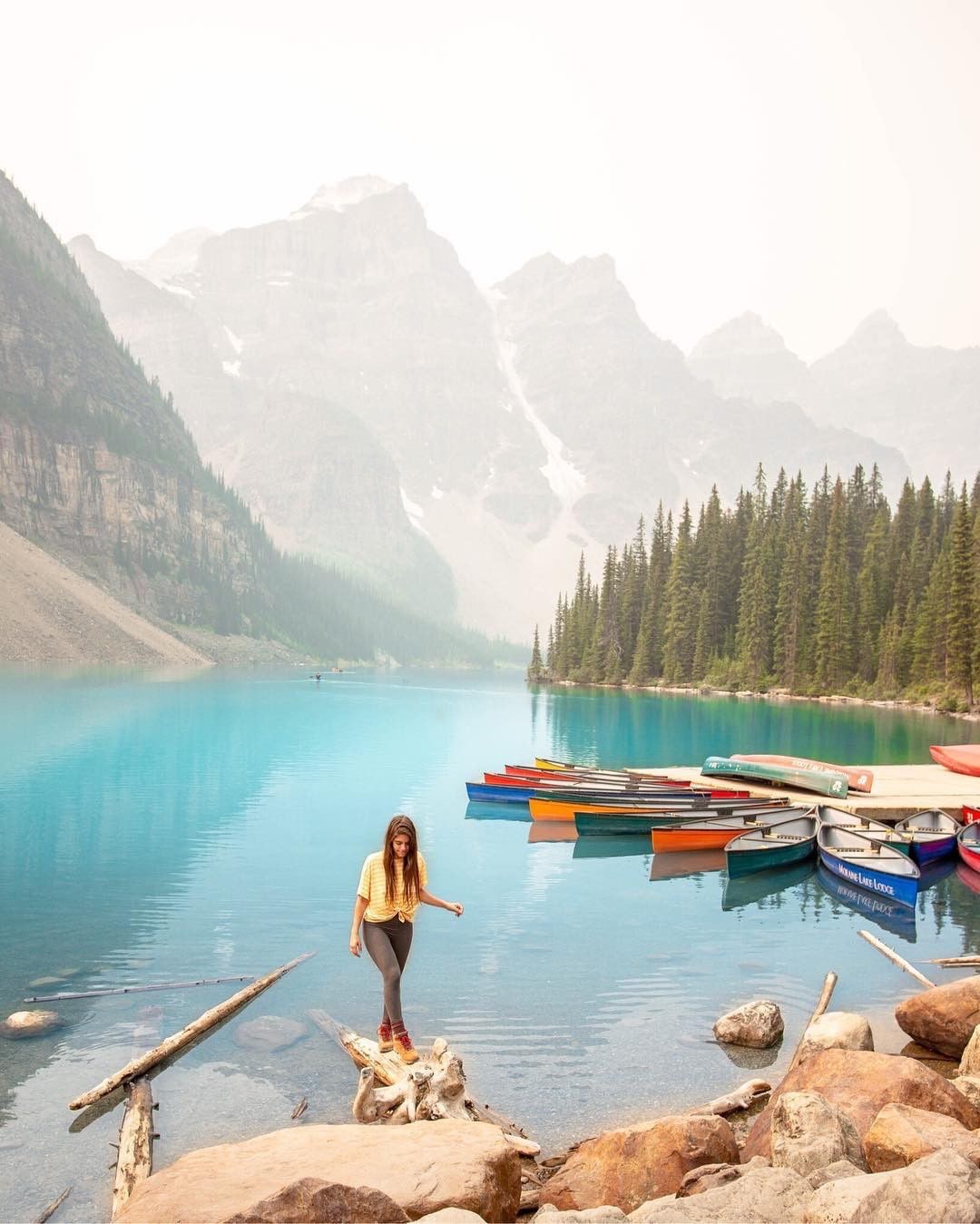 Photo Credit: Instagram User @destinationdame
Photo Credit: Instagram User @destinationdame
For the ultimate experience while RV camping in Banff National Park, finding a prime location to relax is key. Let’s move full speed ahead to uncover five beautiful Banff National Park RV sites.
Two Jack Lakeside Campground
Amenities: If you are looking for RV camping near Banff National Park, this campground is in a great location. Two Jack Lakeside Campground is a short twenty-minute drive from Banff National Park. There are food lockers available to store goods that attract animals as well as bathrooms with showers. There are also picnic areas throughout the campground.
Capacity: This campground has 64 sites and accommodates RVs up to 27 feet in length.
More information: Two Jack Lakeside Campground
Tunnel Mountain Village II Campground
Amenities: Next up for options while RV camping Banff National Park is Tunnel Mountain Village II. This campground is just three miles from Banff. It has electric hookups for RVs in 15, 30 and 50 amp options. It also has a dump station. There are restrooms and showers available in this large campground.
Capacity: Tunnel Mountain Village II Campground is made up of 188 sites. However, the website states that only a fraction of the sites are electrical sites. The grounds are open all year long.
More information: Tunnel Mountain Village II
Lake Louise Trailer Campground
Amenities: Lake Louise is located in the town of the same name and is less than three miles from the lake. The campground is located about an hour from Banff.
This campground has full hookups. In other words, RV users can utilize water, electrical, and sewer connection services while RV camping! There are 30 and 50 amp electrical hookups available at the campground.
Capacity: Lake Louise Trailer Campground has 189 spots and is open year-round. It can accommodate RVs up to 50 feet in length.
More information: Lake Louise Trailer Campground
Rundle Mountain RV Park
Amenities: Located just five minutes from Banff National Park, this RV park is in a prime location for those eager to explore. This pet-friendly campground has hookups and bike rentals for nature lovers who want to explore nearby trails on two wheels.
Capacity: Rundle Mountain has just under 40 sites, according to the map of the grounds.
More information: Rundle Mountain RV Park
Tunnel Mountain Trailer Court
Amenities: Tunnel Mountain Trailer Court is another of the Banff National Park RV campgrounds with full hookups. The campground is 20 minutes from Banff National Park.
With electrical and water hookups, you can ensure your RV shower, microwave, and other tools are ready for use. This campground has sites that are accessible to those with disabilities and a dump station for RVs.
Capacity: This large campground has 321 sites. You can reserve a spot on the Parks Canada website.
More information: Tunnel Mountain Trailer Court
Best Time to Visit Banff National Park for RV Camping
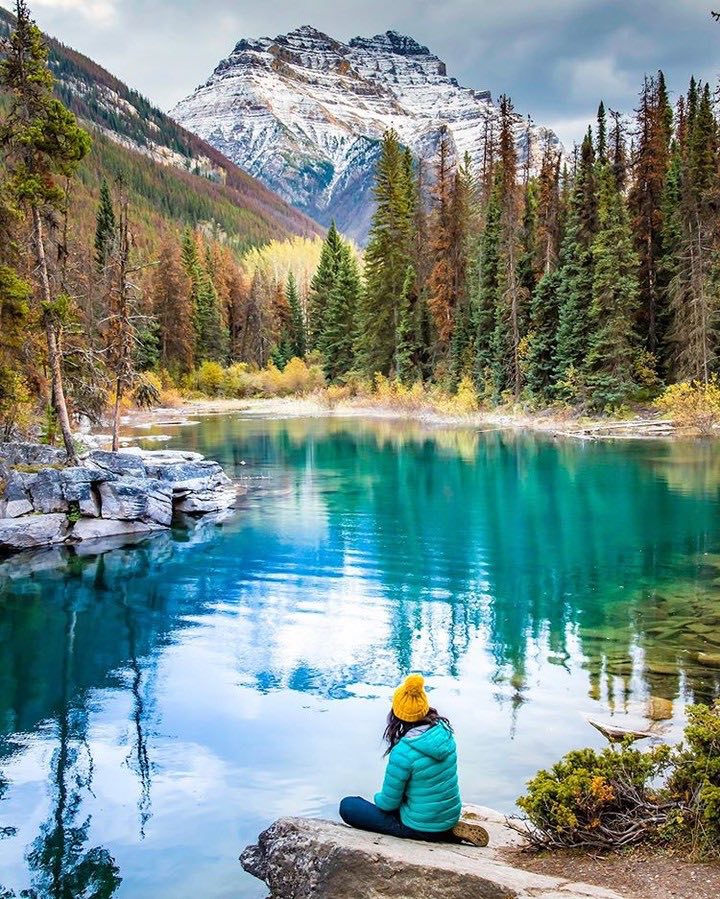 Photo Credit: Instagram User @swisslick_photography
Photo Credit: Instagram User @swisslick_photography
Now that you’re familiar with some RV campgrounds in Banff National Park, it’s time to determine when to set off on your Canadian adventure. Below, we’ll take a look at each season and the weather it brings to Banff.
Winter
Time to bundle up! As you can imagine, winter in Canada is not for the faint of heart. Highs in December and January typically fall around 22 degrees Fahrenheit. February highs hover around 32 degrees Fahrenheit.
Winter activities are plentiful in Banff National Park. From skiing on Mount Norquay to ice skating on Lake Louise, there’s always an icy activity nearby during winter at Banff. Just make sure you plan for the limited daylight hours. In the winter months, daylight can last for as few as eight hours each day.
Spring
Spring is one of the least busy seasons to visit Banff and has lots of events. The weather in Banff during the spring is still chilly, but more pleasant than the freezing winter days.
Highs in March hover around the high 30s. April highs enter into the high 40s and low 50s. In May, the climate enters the high 50s.
In mid-May, the annual Slush Cup competition takes place. According to the event page, this event “ is a competition where participants ski or snowboard down a run into an icy pool of water.” It is quite a sight to see, and spring Banff visitors can watch and even compete if they so choose.
Summer
Warmer temperatures, loads of activities, and long sun-filled days make summer a prime time to make the trip. June, July and August bring highs from the mid-60s to the low 70s with July standing out as the warmest month in Banff.
The weather is pleasant, and there is plenty of time to fit activities into each day. Summers in Banff boast long daylight hours. In July, average daily sunlight lasts for 16 hours! With an array of hiking trails and other outdoor activities open, it’s no surprise that summer is arguably the best time to visit Banff National Park.
Fall
Last but not least is autumn in Banff. In September highs hover around 60 degrees Fahrenheit whole October temps drop into the 50s. The climate begins to delve back into chilled conditions in November with highs in the low 30s. Though the weather shifts, fall is still a beautiful time to explore Banff National Park.
There are fewer crowds during this season and lots of events to take part in. For instance, the Banff Craft Beer Festival takes place in November. Here, brew aficionados can partake in the festivities. Additionally, Banff Centre’s Mountain Film and Book Festival happens from late October to early November.
Things to Do in Banff National Park
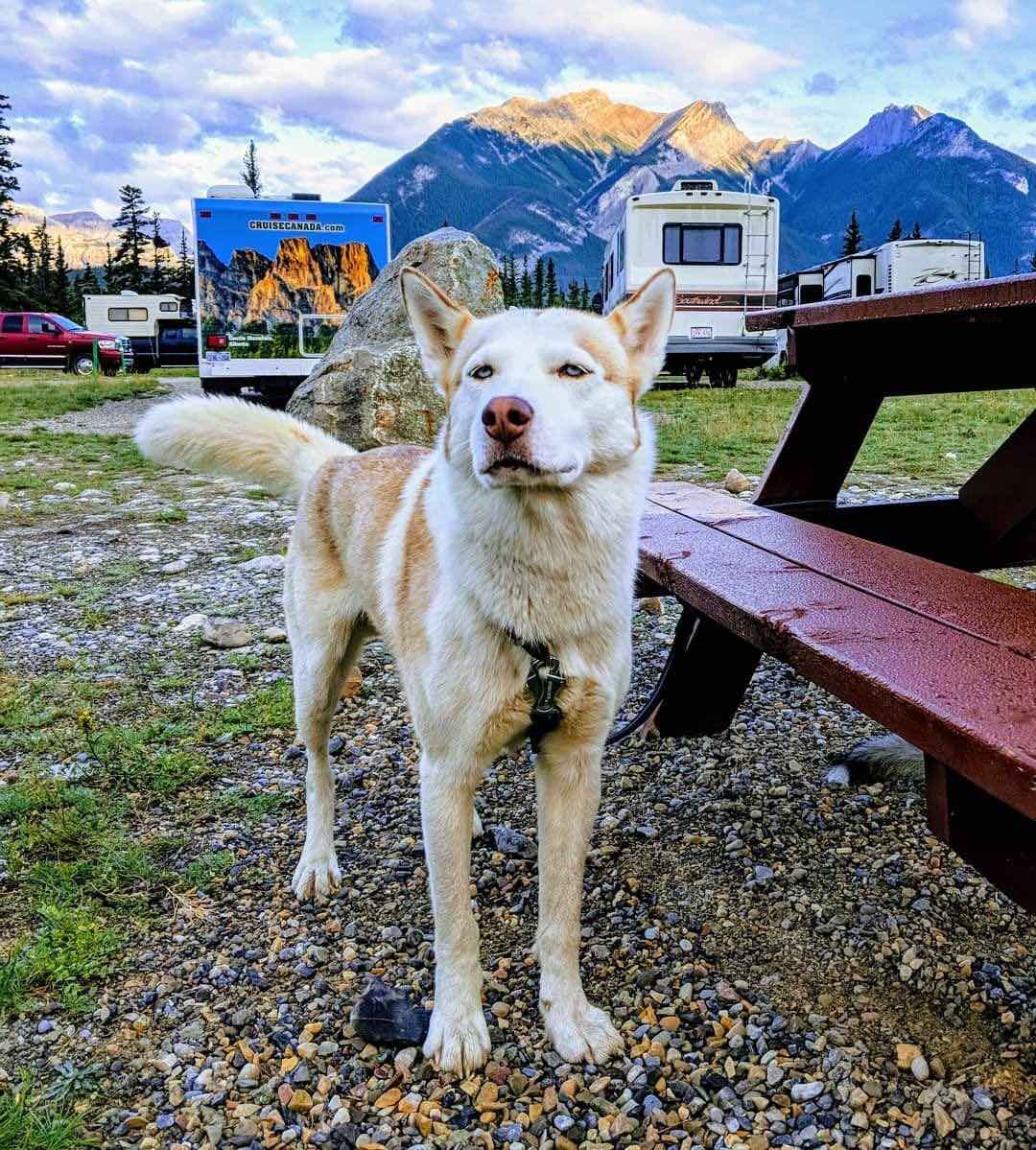 Photo Credit: Instagram User @jansen2929
Photo Credit: Instagram User @jansen2929
The awe-inspiring mountains and lakes of Banff are likely enough to keep visitors preoccupied. But if you need ideas on how to spend your time in Banff, you’ll love the list below. Read on to learn more about things to do in Banff National Park!
A visit to Banff is not complete without a few hikes through the remarkable terrain. A great hike for beginners is Johnston Canyon. This hike is not too high in elevation and takes you up close to two cascading waterfalls. In the winter, these falls freeze and provide a strikingly beautiful scene for hikers in the area.
Kayak around Johnson Lake, The Bow River, or other radiant bodies of water in Banff. To immerse yourself in the wonders this park has to offer, take advantage of the water activities. There are plenty of canoeing and kayaking opportunities around Banff that allow visitors to take in the park's tranquil waters. Time to get paddling!
In Banff, “dashing through the snow” is not just part of a cheery Christmas song. Here, you can experience dog sledding up close and personal. Experienced mushers like the folks at Kingmik Dog Sled Tours offer visitors the chance to take in the landscape while being led by a pack of snow dogs. From 20 minute rides around Lake Louise to six-hour adventure trails, there is a dog sled tour for everyone.
Inhale the relaxing steam of the Banff Hot Springs after a day in the brisk air and chilly temperatures of Banff National Park. These phenomenal relaxation centers offer a great way to unwind. According to locals, the secluded springs at sunrise have spectacular views.
Tips on Visiting Banff National Park
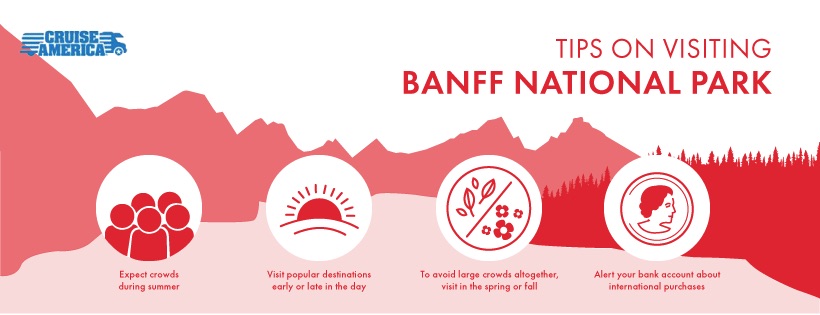
The next stop on this guide to RV camping in Banff National Park is information station. In other words, we're here to advise you before your visit to help you have an unforgettable trip. Let’s get into the tips!
If you’re visiting Banff in the summer, expect lots of people as this is one of the busiest times of the year. You can beat the crowds with a bit of planning. Take advantage of the long summer days by waking up early to visit popular destinations.
Areas like The Banff Gondola, Moraine Lake and Cavell Meadows Hike are packed during the day. Visiting these areas in the early morning or late in the day after many visitors go to dinner is a great way to experience these locations without large swaths of people.
To avoid large crowds altogether, visit Banff in the spring or fall. These two times of year are known as shoulder seasons and are much less crowded.
Banff is a huge park with lots of areas to discover. Having your own transportation is the best way to get around the park and set your pace for the journey. Consider an RV rental for Banff National Park, so you’re not confined to one section of the park or reliant on bus schedules to take you to the next destination.
If you visit Banff from the states or another country, be sure to alert your bank about international purchases. This is crucial as some shops in Banff only accept card payments. Additionally, be mindful that the currency in Banff is the Canadian dollar. You can visit a currency exchange station to trade your money for Canadian currency.
RV Rental for Banff National Park
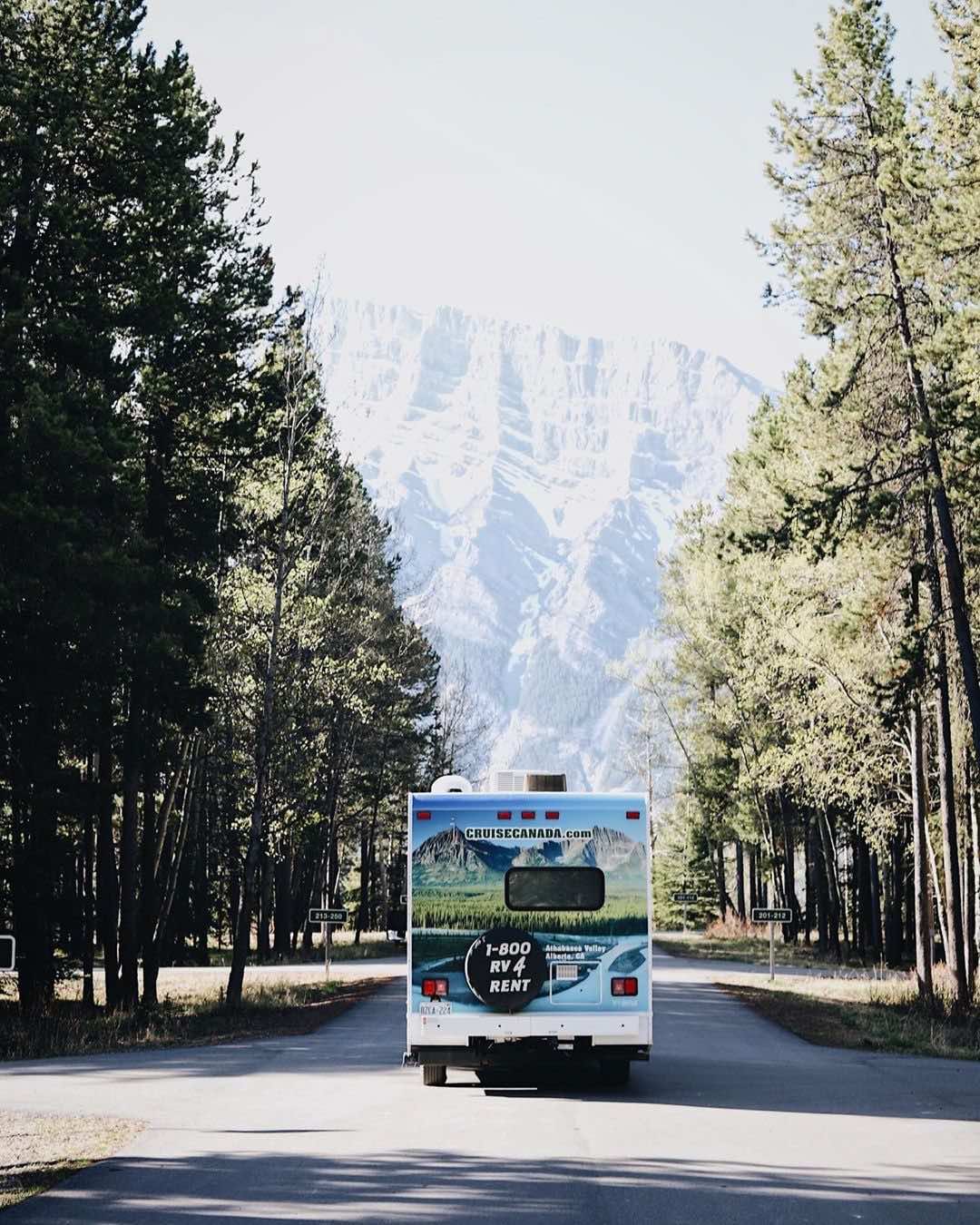 Photo Credit: Instagram User @lilianbardelmeijer
Photo Credit: Instagram User @lilianbardelmeijer
Locals and visitors agree—there is no place on Earth like Banff National Park. To get the most out of your trip, consider an RV rental in Banff National Park. With the ability to navigate around and explore the park on your terms, you’ll be able to soak up the beauty of Banff. Plus, you’ll have all the comforts of home while on the road.
Each Cruise Canada RV is fitted with a shower, microwave, gas cooktop, generator and other amenities that make road travel an enjoyable experience.
Rent your RV today with Cruise Canada and plan your trip to this awesome Canadian national park!

